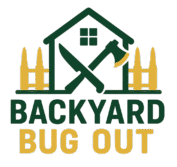So, you’ve been thinking about “getting prepared.” Maybe it’s the crazy news cycle, maybe it’s the storm that knocked your power out last winter, or maybe it’s just that nagging thought: “What if the store shelves were empty for a few days?”
The problem is, when you Google “where to begin prepping,” you either get lost in hardcore doomsday bunkers… or a shopping list that looks like it costs more than your car.
Here’s the good news: prepping doesn’t have to be extreme. It doesn’t have to be expensive. And it definitely doesn’t have to take over your life.
It just has to start.

Prepping doesn’t have to be complicated or overwhelming. It’s really about making small, steady choices that build resilience over time. Start with food, water, and a flashlight, then add skills like cooking without power or purifying water. Each step brings peace of mind—and reminds you why prepping is a smart investment in your family’s future.
—
Step One: Think Small (Really Small)
Don’t try to prepare for the end of the world right out of the gate. Ask yourself something simple:
Could we get by for 3 days if the lights went out and the stores were closed?
If you can say “yes” to that, you’re already ahead of most people. Prepping is really just building that foundation—and then stacking more on top of it as you go.
—
The First Things to Cover
Forget the tactical gadgets for now. These are the “boring but lifesaving” basics:
Water: 1 gallon per person per day. Buy some jugs, stash them in the closet. Add a simple filter or purification tablets if you can.
Food: Stock shelf-stable stuff you actually eat—rice, pasta, peanut butter, canned soup. No need to reinvent your diet.
Warmth & Shelter: Extra blankets, a few emergency mylar blankets (they cost like a buck), and a safe backup heat source if you live somewhere cold.
First Aid: Band-aids, meds you use every day, pain relievers, antiseptic. Start with a store-bought kit and add to it.
Light & Communication: A couple flashlights with extra batteries, maybe a hand-crank radio. A cheap power bank for your phone.
—
A Simple 4-Week Starter Plan
If you like structure, here’s one way to build momentum:
Week 1: Grab 3 gallons of water per family member. Done.
Week 2: Add a week’s worth of shelf-stable food to your pantry.
Week 3: Build out a first aid kit.
Week 4: Write down an emergency contact plan (who you’ll call, where you’ll meet).
Four weeks, and you’ve got a foundation stronger than 90% of folks out there.
—
Things NOT to Do
Don’t blow your budget on gear first. A $300 knife won’t help if you don’t have clean water.
Don’t stress about doing it all at once. Small, steady steps beat “prepper burnout.”
Don’t get stuck in the doom-scroll. Prepping is about peace of mind, not panic.
—
From 3 Days → 2 Weeks → 3 Months
Think of it like a ladder.
First rung: 3 days of supplies.
Next rung: 2 weeks.
After that: a couple months if you want.
Take it one step at a time. That’s how real progress happens.
—
Wrapping It Up
Prepping isn’t about living in fear—it’s about living with a little more freedom. Knowing you’ve got food, water, and light no matter what happens is powerful.
So if you’ve been asking “where to begin prepping”… the answer is right here: start small, stay consistent, and build from there.
👉 Oh, and to make it even easier, I put together a free 3-Day Survival Checklist you can download. Print it, throw it on the fridge, and check things off as you go.
🧠 FAQ Section
Q1: How much food and water should a beginner prepper store?
Start small — aim for three days of food and water for each person in your household. That’s enough to get through most short-term emergencies. Once you’ve covered the basics, work your way up to a one- or two-week supply.
Q2: What are the most important items to start prepping with?
Focus on the essentials: water, food, light, and first aid. Once you have those, add practical tools like a flashlight, a manual can opener, extra batteries, and a way to charge your phone off-grid.
👉 Ready.gov’s emergency kit list has a great beginner checklist.
Q3: How can I prep on a tight budget?
Start with what you already have. Each grocery trip, buy one extra can of food or gallon of water. Over time, small additions add up to a reliable emergency supply without breaking your budget.
Q4: Where should I store my emergency supplies?
Keep your main kit in a cool, dry place that’s easy to reach — a closet, pantry, or garage shelf. If possible, make smaller kits for your car and workplace, so you’re prepared no matter where you are.
Q5: Do I need a “bug-out bag” right away?
Not immediately. Focus first on your home emergency supplies (bug-in readiness). Once you’re covered for short-term disruptions, build a basic bug-out bag for evacuation scenarios — like wildfires or extended power outages.
Q6: What’s the biggest mistake new preppers make?
Trying to do everything at once. Prepping is about steady progress, not panic buying. Start with short-term readiness, then expand your skills and supplies step by step.
